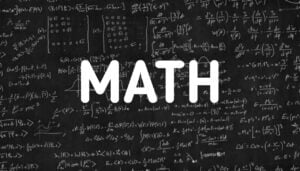
21MAT21
Module - 1
Integral Calculus
Multiple Integrals: Evaluation of double and triple integrals, evaluation of double integrals by change
of order of integration, changing into polar coordinates. Applications to find: Area and Volume by
double integral. Problems.
Beta and Gamma functions: Definitions, properties, relation between Beta and Gamma functions.
Problems.
Self-Study: Center of gravity.
Module - 2
Vector Calculus
Vector Differentiation: Scalar and vector fields. Gradient, directional derivative, curl and
divergence – physical interpretation, solenoidal and irrotational vector fields. Problems.
Vector Integration: Line integrals, Surface integrals. Applications to work done by a force and flux.
Statement of Green’s theorem and Stoke’s theorem. Problems.
Self-Study: Volume integral and Gauss divergence theorem.
Module - 3
Partial Differential Equations (PDE’s)
Formation of PDE’s by elimination of arbitrary constants and functions. Solution of nonhomogeneous PDE by direct integration. Homogeneous PDEs involving derivative with respect to
one independent variable only. Solution of Lagrange’s linear PDE. Derivation of one-dimensional
heat equation and wave equation.
Self-Study: Solution of one-dimensional heat equation and wave equation by the method of
separation of variables
Module - 4
Numerical methods -1
Solution of polynomial and transcendental equations: Regula-Falsi and Newton-Raphson methods
(only formulae). Problems.
Finite differences, Interpolation using Newton’s forward and backward difference formulae, Newton’s
divided difference formula and Lagrange’s interpolation formula (All formulae without proof).
Problems.
Numerical integration: Simpson’s (1/3)rd and (3/8)th rules(without proof). Problems.
Self-Study: Bisection method, Lagrange’s inverse Interpolation, Weddle’s rule.
Module - 5
Numerical methods -2
Numerical Solution of Ordinary Differential Equations (ODE’s):
Numerical solution of ordinary differential equations of first order and first degree: Taylor’s series
method, Modified Euler’s method, Runge-Kutta method of fourth order, Milne’s predictor-corrector
formula (No derivations of formulae). Problems.
It is best to practise a contest for among the finest blogs on the web. I’ll advocate this site!